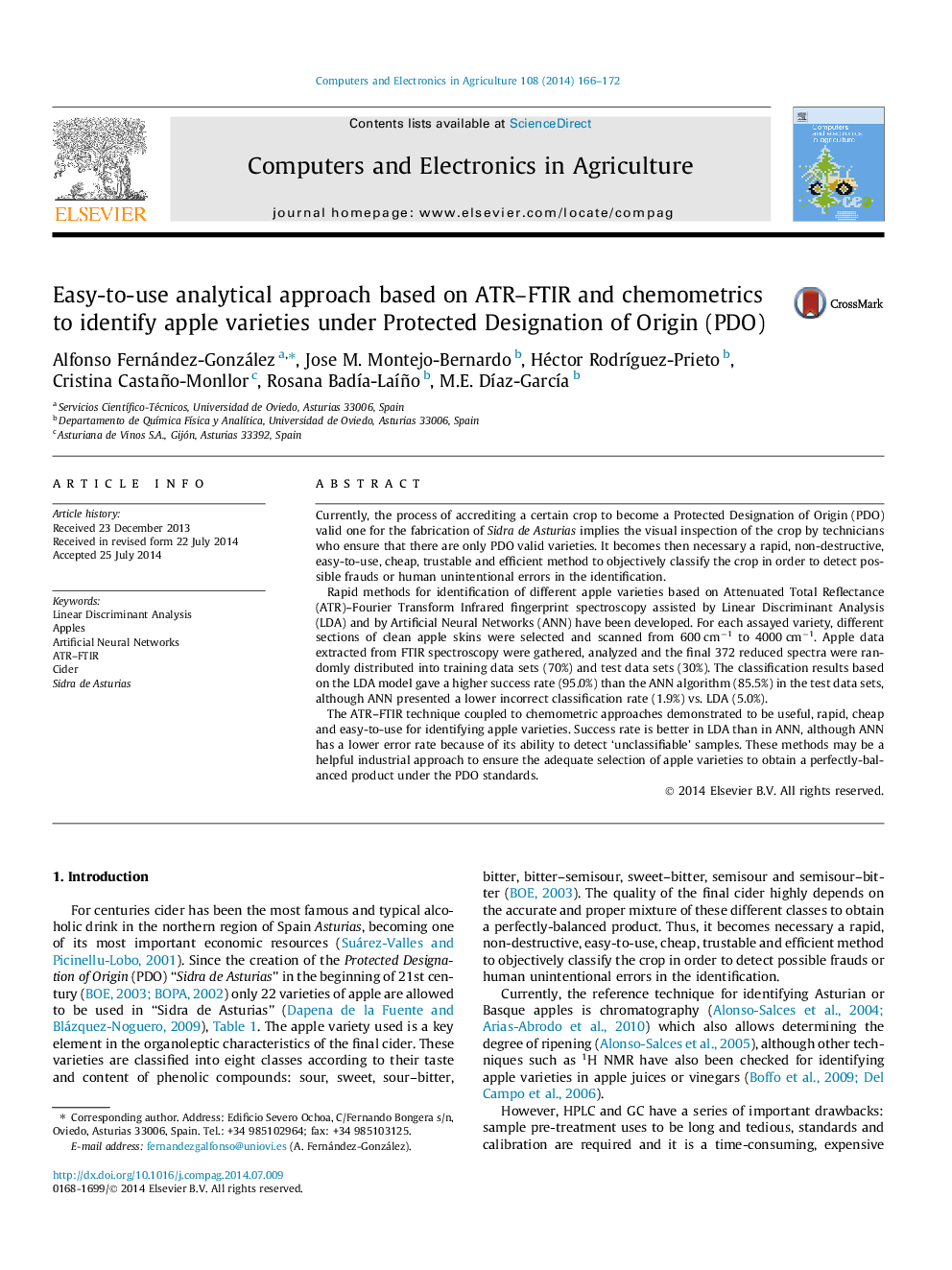| کد مقاله | کد نشریه | سال انتشار | مقاله انگلیسی | نسخه تمام متن |
|---|---|---|---|---|
| 84271 | 158871 | 2014 | 7 صفحه PDF | دانلود رایگان |

• We have tested seven varieties of apples from five different taste-classes.
• The method is able to identify apple classes based on the FTIR profile of their skin.
• It is a non-destructive method as it needs circa one square millimetre of skin.
• LDA yields a 91% success in the classification.
Currently, the process of accrediting a certain crop to become a Protected Designation of Origin (PDO) valid one for the fabrication of Sidra de Asturias implies the visual inspection of the crop by technicians who ensure that there are only PDO valid varieties. It becomes then necessary a rapid, non-destructive, easy-to-use, cheap, trustable and efficient method to objectively classify the crop in order to detect possible frauds or human unintentional errors in the identification.Rapid methods for identification of different apple varieties based on Attenuated Total Reflectance (ATR)–Fourier Transform Infrared fingerprint spectroscopy assisted by Linear Discriminant Analysis (LDA) and by Artificial Neural Networks (ANN) have been developed. For each assayed variety, different sections of clean apple skins were selected and scanned from 600 cm−1 to 4000 cm−1. Apple data extracted from FTIR spectroscopy were gathered, analyzed and the final 372 reduced spectra were randomly distributed into training data sets (70%) and test data sets (30%). The classification results based on the LDA model gave a higher success rate (95.0%) than the ANN algorithm (85.5%) in the test data sets, although ANN presented a lower incorrect classification rate (1.9%) vs. LDA (5.0%).The ATR–FTIR technique coupled to chemometric approaches demonstrated to be useful, rapid, cheap and easy-to-use for identifying apple varieties. Success rate is better in LDA than in ANN, although ANN has a lower error rate because of its ability to detect ‘unclassifiable’ samples. These methods may be a helpful industrial approach to ensure the adequate selection of apple varieties to obtain a perfectly-balanced product under the PDO standards.
Figure optionsDownload as PowerPoint slide
Journal: Computers and Electronics in Agriculture - Volume 108, October 2014, Pages 166–172